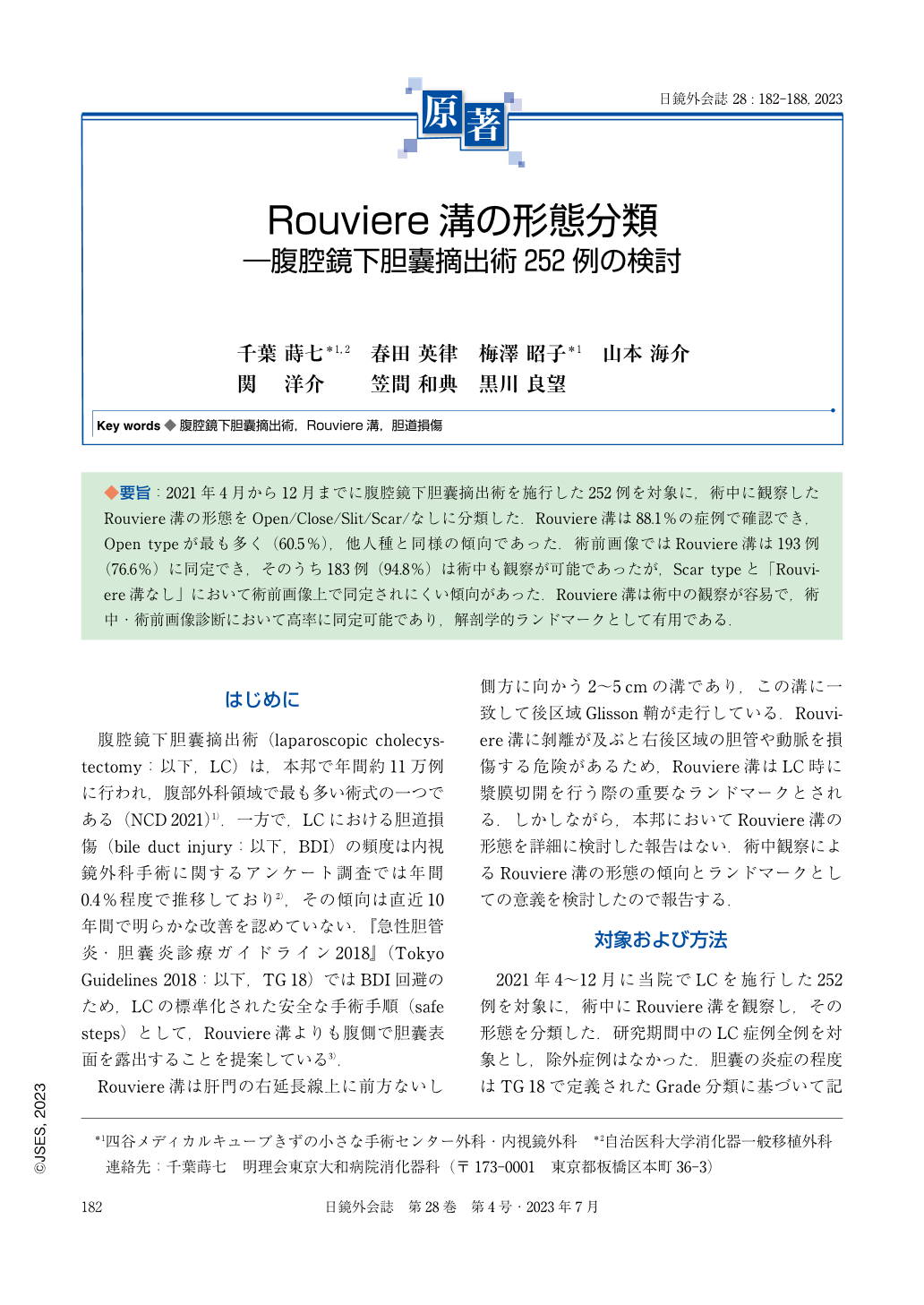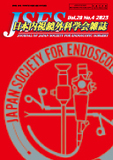Japanese
English
- 有料閲覧
- Abstract 文献概要
- 1ページ目 Look Inside
- 参考文献 Reference
◆要旨:2021年4月から12月までに腹腔鏡下胆囊摘出術を施行した252例を対象に,術中に観察したRouviere溝の形態をOpen/Close/Slit/Scar/なしに分類した.Rouviere溝は88.1%の症例で確認でき,Open typeが最も多く(60.5%),他人種と同様の傾向であった.術前画像ではRouviere溝は193例(76.6%)に同定でき,そのうち183例(94.8%)は術中も観察が可能であったが,Scar typeと「Rouviere溝なし」において術前画像上で同定されにくい傾向があった.Rouviere溝は術中の観察が容易で,術中・術前画像診断において高率に同定可能であり,解剖学的ランドマークとして有用である.
【Background】Rouviere's sulcus(RS)has been proposed as a landmark to avoid bile duct injury during laparoscopic cholecystectomy(LC), but the anatomy of RS has not been described clearly in Japan. The aim of this study was to determine the anatomical characteristics of RS in Japanese. 【Materials and methods】We reviewed the anatomy of RS in 252 Japanese patients from April to December 2021 during LC and classified as Open/Close/Slit/Scar/or None. Preoperative CT scan or MRI were reviewed to identify RS, defined as the sulcus of the liver which includes the posterior sectional pedicle. 【Results】Intraoperatively, RS was observed in 88.1%of the patients, with the Open type being most common(60.5%). The result is similar to that reported for people of other races. On preoperative imaging studies, RS was detected in 76.6%of the patients, and in 94.8%of them RS was observed during the operation as well. 【Conclusion】RS can be identified in most Japanese patients undergoing LC, and the majority ware classified as the Open type.

Copyright © 2023, JAPAN SOCIETY FOR ENDOSCOPIC SURGERY All rights reserved.


